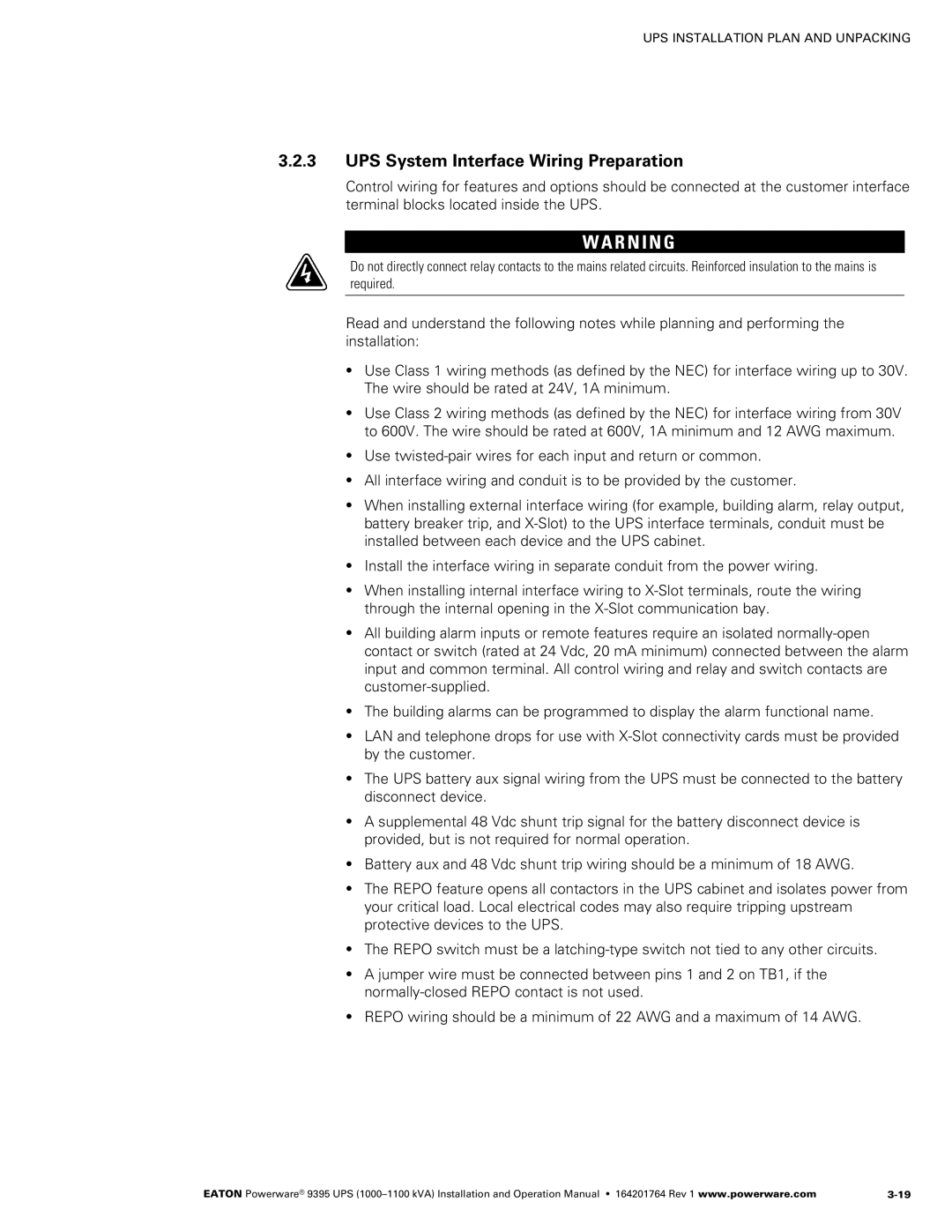
UPS INSTALLATION PLAN AND UNPACKING
3.2.3UPS System Interface Wiring Preparation
Control wiring for features and options should be connected at the customer interface terminal blocks located inside the UPS.
W A R N I N G
Do not directly connect relay contacts to the mains related circuits. Reinforced insulation to the mains is required.
Read and understand the following notes while planning and performing the installation:
SUse Class 1 wiring methods (as defined by the NEC) for interface wiring up to 30V. The wire should be rated at 24V, 1A minimum.
SUse Class 2 wiring methods (as defined by the NEC) for interface wiring from 30V to 600V. The wire should be rated at 600V, 1A minimum and 12 AWG maximum.
SUse
SAll interface wiring and conduit is to be provided by the customer.
SWhen installing external interface wiring (for example, building alarm, relay output, battery breaker trip, and X−Slot) to the UPS interface terminals, conduit must be installed between each device and the UPS cabinet.
SInstall the interface wiring in separate conduit from the power wiring.
SWhen installing internal interface wiring to X−Slot terminals, route the wiring through the internal opening in the X−Slot communication bay.
SAll building alarm inputs or remote features require an isolated
SThe building alarms can be programmed to display the alarm functional name.
SLAN and telephone drops for use with X−Slot connectivity cards must be provided by the customer.
SThe UPS battery aux signal wiring from the UPS must be connected to the battery disconnect device.
SA supplemental 48 Vdc shunt trip signal for the battery disconnect device is provided, but is not required for normal operation.
SBattery aux and 48 Vdc shunt trip wiring should be a minimum of 18 AWG.
SThe REPO feature opens all contactors in the UPS cabinet and isolates power from your critical load. Local electrical codes may also require tripping upstream protective devices to the UPS.
SThe REPO switch must be a latching−type switch not tied to any other circuits.
SA jumper wire must be connected between pins 1 and 2 on TB1, if the
SREPO wiring should be a minimum of 22 AWG and a maximum of 14 AWG.
EATON Powerware® 9395 UPS | 3−19 |
